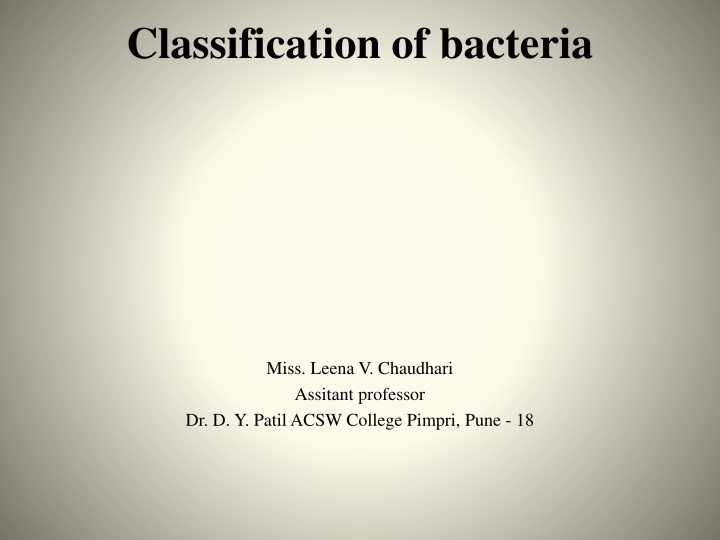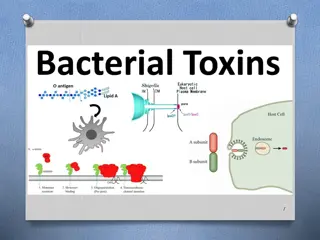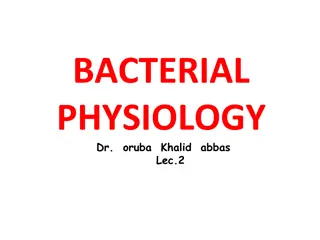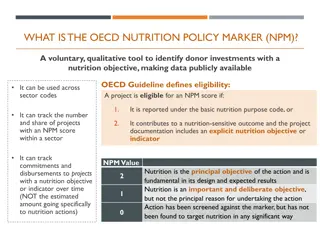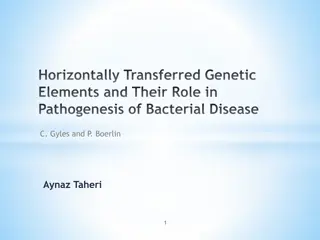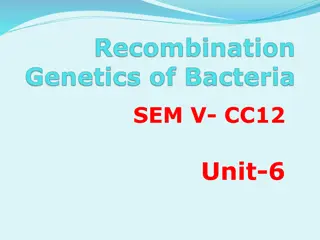Bacterial Classification and Nutrition
Bacteria exhibit diverse modes of nutrition, including heterotrophic and autotrophic types. Photosynthetic bacteria use sunlight for energy, while chemoautotrophic bacteria do not have photosynthetic pigments. Explore different types of bacteria based on their nutritional strategies.
Download Presentation

Please find below an Image/Link to download the presentation.
The content on the website is provided AS IS for your information and personal use only. It may not be sold, licensed, or shared on other websites without obtaining consent from the author.If you encounter any issues during the download, it is possible that the publisher has removed the file from their server.
You are allowed to download the files provided on this website for personal or commercial use, subject to the condition that they are used lawfully. All files are the property of their respective owners.
The content on the website is provided AS IS for your information and personal use only. It may not be sold, licensed, or shared on other websites without obtaining consent from the author.
E N D
Presentation Transcript
Classification of bacteria Miss. Leena V. Chaudhari Assitant professor Dr. D. Y. PatilACSW College Pimpri, Pune - 18
Bacteria exhibit different modes of nutrition. They can be:- - Heterotrophic bacteria - Autotrophic bacteria
Photosynthetic bacteria: use sunlight as source of energy and electron donors are H2O, S and other sulphur containing inorganic compounds. A) Green sulphur bacteria: contain bacterio chlorophyll which is chemically similar to chlorophyll. Usually live in anaerobic conditions. CO2 + 12 H2S C6H12O6 + H2O + S B) Purple sulphur bacteria : contain bacteriopurpurin. Here the electron donors are some other sulphur containing organic or inorganic compounds in place of H2S or elemental S.
Chemoautotrophic bacteria Are without photosynthetic pigments. A. Nitrifying bacteria: mainly found in soil. - through their metabolic activities they convert ammonia or ammonium ions into nitrates. The formation of nitrates from ammonia or ammonium ion is called nitrification. b. Iron bacteria: found in iron containing rocks. Eg. Ferrobacillus leptothrix. c. Methanogens : produce methane and water from H2 and CO2 eg. Hydrogenomonas. H2 + CO2 CH4 + 2H2O + ENERGY
Heterotrophic bacteria Unable to synthesize their own metabolites and depend on preformed organic compounds. They obtain carbon from organic compound made by other organisms. Alcohols, fatty acids and other organic substances serve as source of electron for photosynthetic reaction. Eg. Purple non sulphur bacteria
Chemo-heterotrophic bacteria: - Take their food from other plants and animals. - They obtain both energy and carbon sources from organic compounds made by other organisms. a) Parasitic bacteria: these can live in or upon organisms, known as host, from which they obtain their food and usually shelter. They may be Obligate parasite, grow only in living cells and Facultative parasite (grow on dead material ). b) Saprophytic bacteria: obtain their food from dead and decaying organic matter of all living beings e.g, Bacillus mycoides. c) Symbiotic bacteria: symbiosis means a close ecological relationship between two different species. This can be mutually beneficial between the microbe and the host. some bacteria live in symbiosis with other plants and animals. Eg. Rhizobium legumenosarum.
